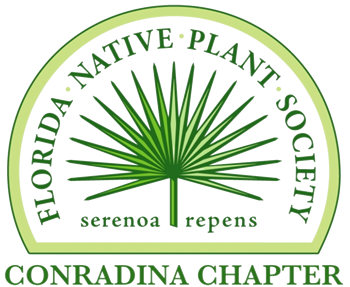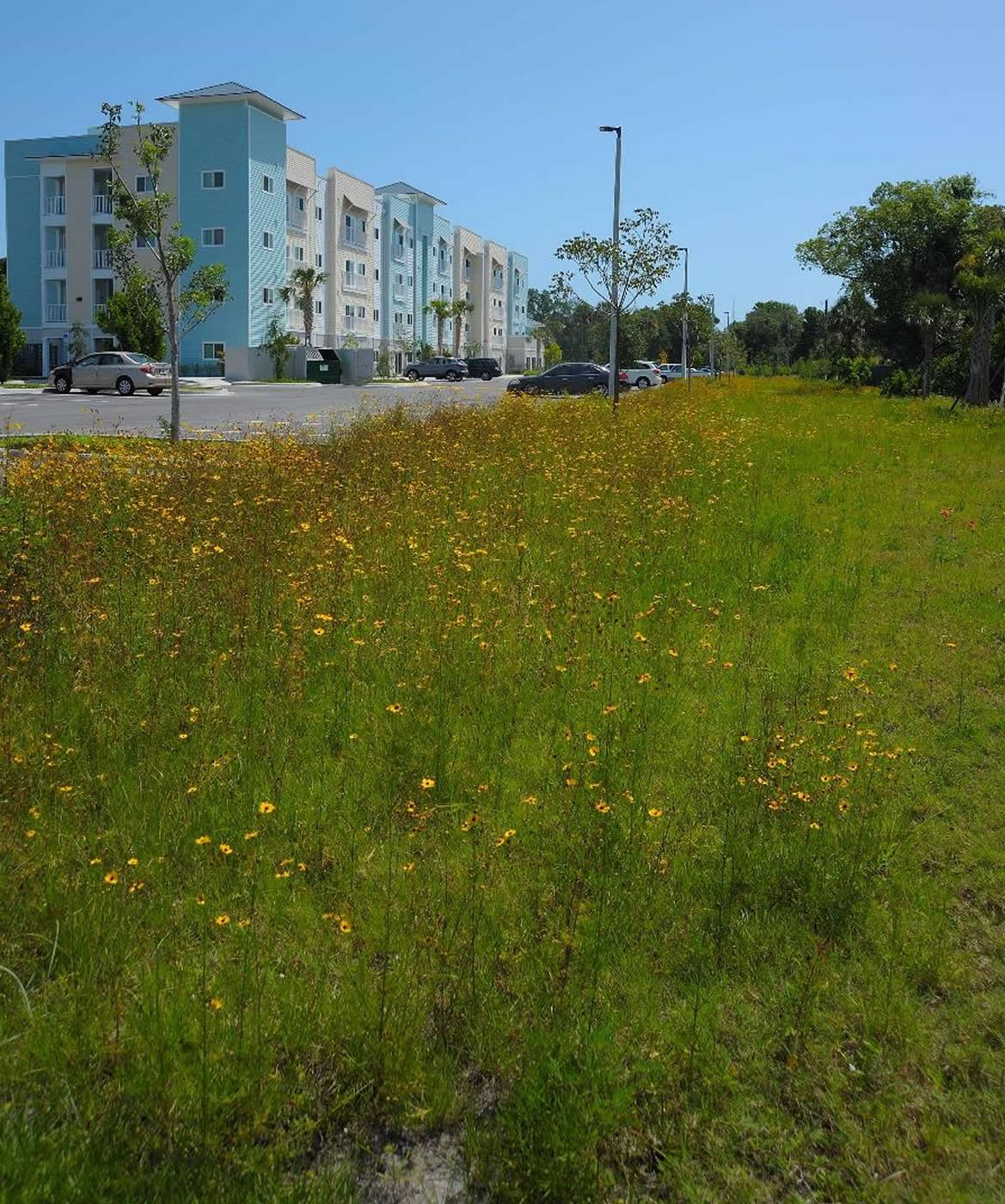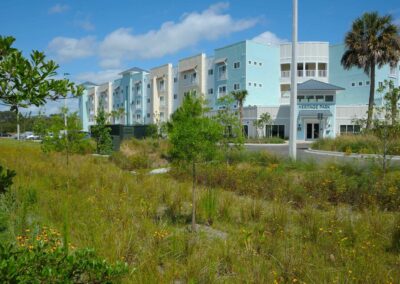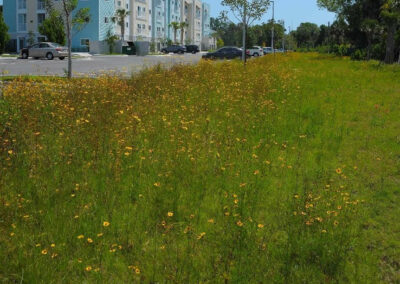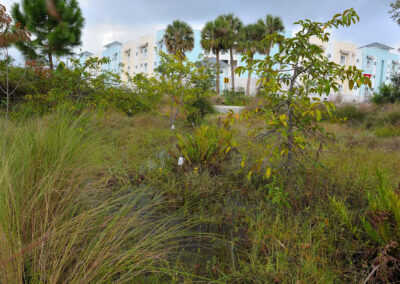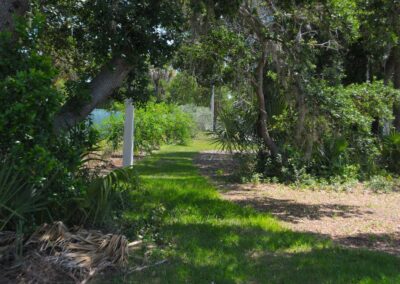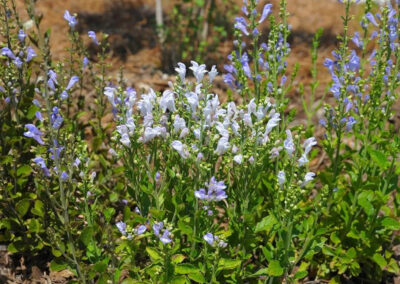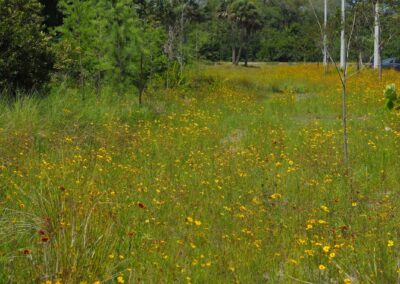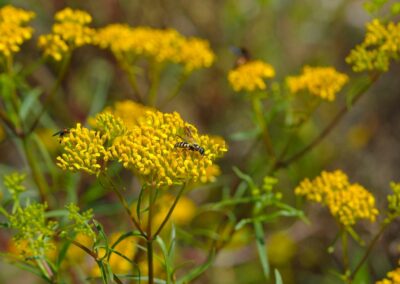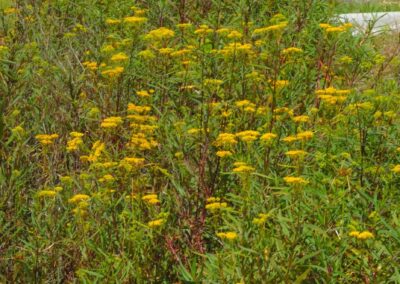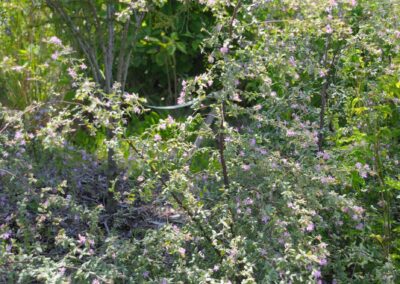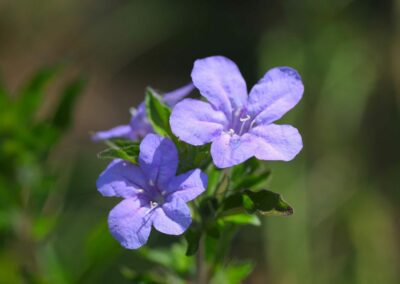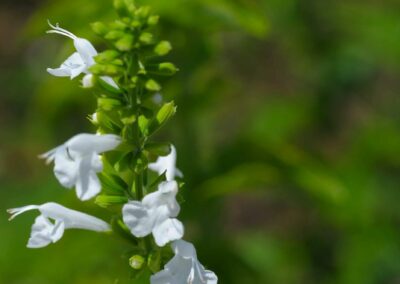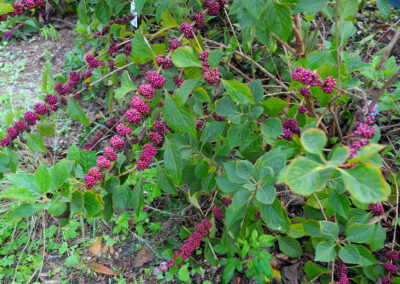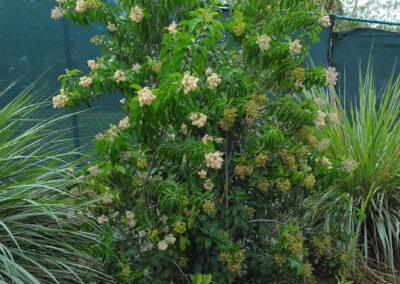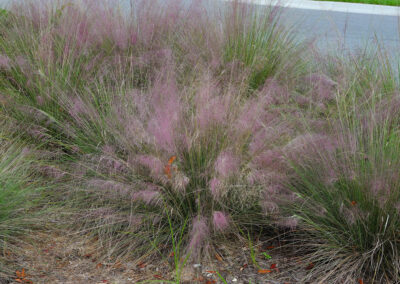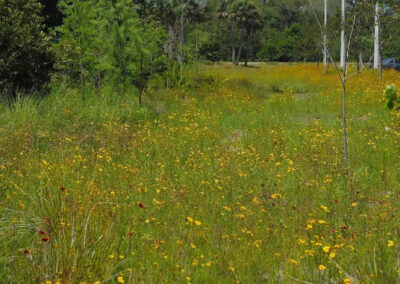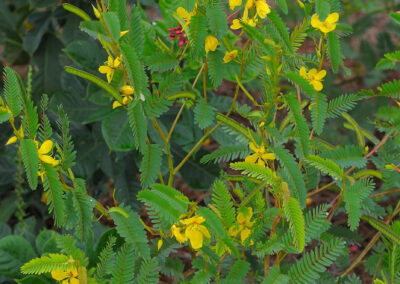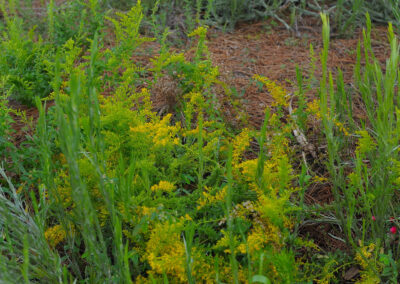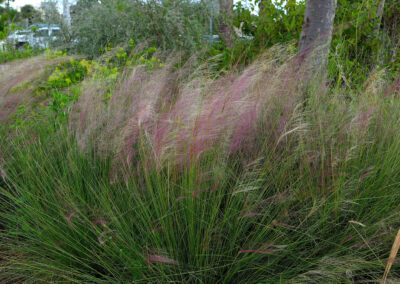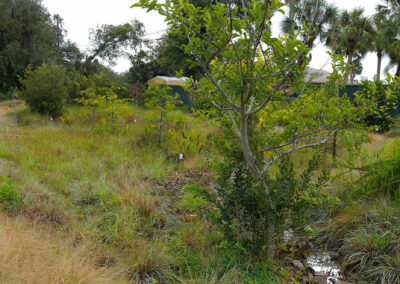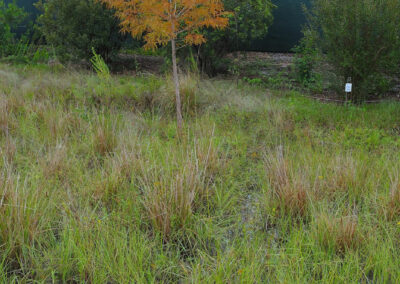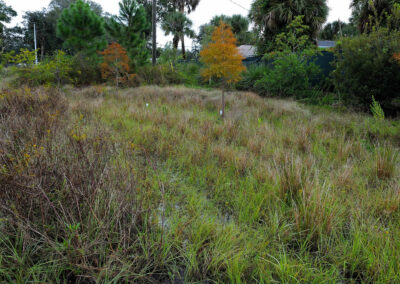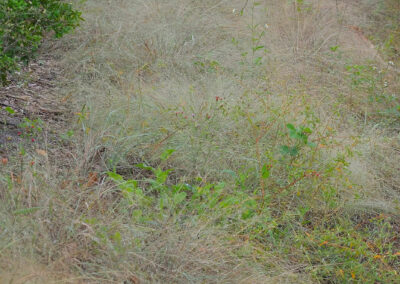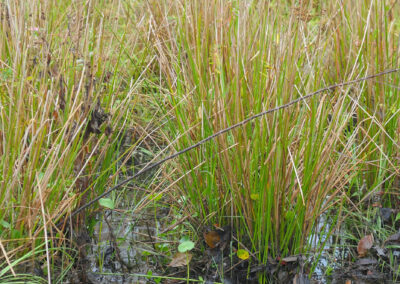Heritage Park at Crane Creek
2550 Grant Street, Melbourne
Designed By: Steadytown and Aloha Pacifica Inc
Installed By: Fischer and Fisher Landscaping, Inc. and Steadytown
Started: 2021
Percentage of Native Plants: 98%
Square Footage of Land Available on Tour: 15 acres
Years on the Landscaping Tour: First one!
Unique Features and Animals: We have a Heritage Park Garden map that highlights the different sections of the landscape: the “Food Forest”, “Circle”, “Rain Garden”, “Burr St. Garden”, “Field Meadow”, “Scrub Ridge”, “Pond”, “Wetland Preserve”, “Herb Garden”, “Church Garden”, and “Jackson St. Garden”. Each section features a unique garden area, with plants appropriate for that area, and trails connecting sections.
The complete list of known wildlife is documented on the Heritage Park at Crane Creek iNaturalist project accessible on line at: https://www.inaturalist.org/projects/heritage-park-at-crane-creek. Since November of 2021, the project has documented 44 species of birds, 33 species of butterflies, 23 moth species, 27 species of dragonflies and damselflies, 10 native bee species, and 10 species of reptiles and amphibians. Observations of vulnerable and/or species of special concern include Swallowtail Kite, Osprey, Bald Eagle, Wood Stork, Atala, Fulvous Hairstreak, American Bumblebee,
Ridgeback Grasshopper, Groundcherry, and Florida Pine Snake.
Landscape Description: Heritage Park is a Florida Native habitat project situated on 15 acres of land together with a diverse residential community. The site is located just south of Crane Creek in Melbourne, FL, and includes three acres of natural wetlands, a large rain garden, meadow, freedom lawn, pond, and garden trails featuring over 100 species of cultivated native plants. Heritage Park is adjacent to Crane Creek Sanctuary, part of the Brevard County Environmentally Endangered Lands (EEL) Program, which includes scrub, wetland, and hardwood forest habitat.
The property and residential community is led by non non-profit Carrfour Supportive Housing Inc., managed by AGPM, Inc., and the landscape is managed through a partnership with Change of Greenery and the Steadytown foundation.
Challenges: One key element was navigating the planting and seeding of the stormwater management area with the City of Melbourne engineering department where we had to show 60% -minimum “green” coverage post post-install, slope stabilization, and that larger wetland plants and trees would not negatively impact stormwater pond volume. We were able to accomplish this with a performance bond to allow time for the vegetation to establish over the summer (a cover
crop helped there).
